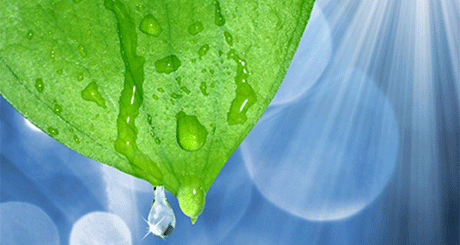Project period: 2014-2018
The purpose of the PEC tandem project is to develop a working “artificial leaf” capable of splitting water into hydrogen and oxygen using solar irradiation as the only energy source.
Background
There are many ways to make “solar fuels”. The “brute force” approach is to simply use electricity from a solar cell to power an electrolyzer unit to split water into hydrogen and oxygen and the technology to do so is available today. The problem is that the required units (solar cell, power electronics and electrolyzer) are all expensive so the resulting hydrogen cannot compete with fossil fuel derived hydrogen.
Approach
In this project, we aim to integrate the solar energy capture elements (solar cells) and electrolyzer into a single unit, sometimes called an artificial leaf, in order to produce cheaper solar hydrogen than the conventional approach can provide.
In order to have enough electrochemical driving force (voltage) to split water at a reasonable rate, it is strongly preferable to combine two photoharvesters in series and use their combined voltage to drive the reaction - instead of on a single absorber to provide all the energy. This tandem approach, where two photoabsorbers optimized for different wavelengths (i.e. blue light and red light) work together in an integrated fashion, is exactly how nature performs photosynthesis in green plants. In natural leaves photosystem I and photosystem II work in tandem to boost the voltage – and in the artificial leaf, we plan to use two inorganic absorber systems – i.e. silicon in combination with a III-V semiconductor such as GaP(N). Once the core (tandem cell) structure with the two absorbers has been synthesized, it must be protected from corrosion in service and provided with electrocatalytic coatings for hydrogen evolution and oxygen evolution to complete the artificial leaf.
Outcomes
Despite the “applied” nature of the project, there are several fundamental issues to overcome and success is not a foregone conclusion. For example, the successful “stacking” (growth) of an efficient, high bandgap top-cell on an efficient silicon bottom-cell is a non-trivial undertaking. Certain III-V materials may be possible to grow epitaxially on a silicon substrate, but it is possible that a non-epitaxial approach would be preferred. Moreover, the long-term protection of both sides of the structure from corrosion in the aqueous working environment is a serious issue which must also be dealt with.
Despite the challenges, we have promising ideas for how to tackle all these (and more) issues and hopefully arrive at a candidate design for a working artificial leaf which will split water with good efficiency and without external bias. Thus the expected outcome of the project is a large step towards practical artificial photosynthesis.
